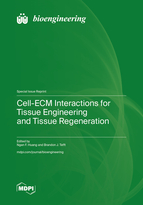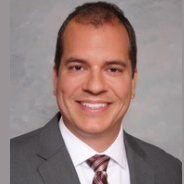Cell-ECM Interactions for Tissue Engineering and Tissue Regeneration
A special issue of Bioengineering (ISSN 2306-5354). This special issue belongs to the section "Biochemical Engineering".
Deadline for manuscript submissions: closed (15 December 2022) | Viewed by 25545
Special Issue Editors
Interests: cardiovascular tissue engineering; biomaterials; extracellular matrix interactions; stem cell therapy; peripheral arterial disease; muscle regeneration
Special Issues, Collections and Topics in MDPI journals
Interests: vascular tissue engineering; heart valve tissue engineering; nanotechnology; cardiovascular regenerative engineering; biomaterials; coronary heart disease; valvular heart disease
Special Issue Information
Dear Colleagues,
It is increasingly appreciated that the extracellular matrix (ECM) provides not only structural support, but also dynamic signaling cues that influence cellular behavior. In the context of tissue engineering and tissue regeneration, the ECM plays a critical role in many aspects, including the regulation of cell survival, cellular reorganization, contractility, as well as in the regulation of engineered cardiovascular tissue formation and function. This issue explores cellular interactions with naturally derived ECMs, biomimetic materials, and synthetic hydrogels. For example, the ECMs can take the form of 3D porous scaffolds, bioinks for 3D bioprinting, or decellularized ECMs. We invite manuscripts that focus on how cell–ECM interactions lead to advances in tissue engineering or in vivo tissue regeneration, as well as in the improved understanding of the underlying molecular biology.
Dr. Ngan F. Huang
Dr. Brandon J. Tefft
Guest Editors
Manuscript Submission Information
Manuscripts should be submitted online at www.mdpi.com by registering and logging in to this website. Once you are registered, click here to go to the submission form. Manuscripts can be submitted until the deadline. All submissions that pass pre-check are peer-reviewed. Accepted papers will be published continuously in the journal (as soon as accepted) and will be listed together on the special issue website. Research articles, review articles as well as short communications are invited. For planned papers, a title and short abstract (about 100 words) can be sent to the Editorial Office for announcement on this website.
Submitted manuscripts should not have been published previously, nor be under consideration for publication elsewhere (except conference proceedings papers). All manuscripts are thoroughly refereed through a single-blind peer-review process. A guide for authors and other relevant information for submission of manuscripts is available on the Instructions for Authors page. Bioengineering is an international peer-reviewed open access monthly journal published by MDPI.
Please visit the Instructions for Authors page before submitting a manuscript. The Article Processing Charge (APC) for publication in this open access journal is 2700 CHF (Swiss Francs). Submitted papers should be well formatted and use good English. Authors may use MDPI's English editing service prior to publication or during author revisions.
Keywords
- extracellular matrix
- tissue engineering
- bioprinting
- decellularized matrix
- tissue regeneration








